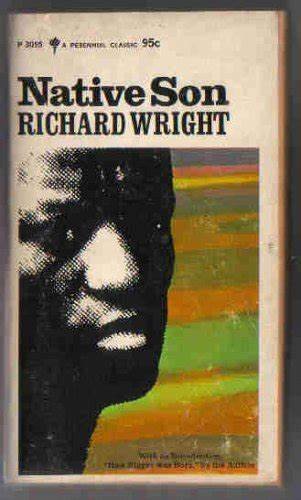Richard Wright’s Native Son is a profound and groundbreaking novel that delves into the racial and social dynamics of 20th-century America. Set in Chicago during the 1930s, it follows the life of Bigger Thomas, a young Black man who is caught in the web of systemic racism, economic hardship, and internal conflict. The novel highlights the harsh realities faced by Black individuals in a deeply segregated society, focusing on themes of identity, oppression, and the struggle for agency. Through a detailed exploration of its characters, Wright paints a vivid picture of the complexities of race, class, and power. This article provides a comprehensive look at the key characters of Native Son and offers insights into their roles and significance in the novel, along with class activities and assignments for a deeper understanding.
Main Characters in Native Son
- Bigger Thomas
Bigger Thomas is the protagonist and central figure of Native Son. He is a young Black man living in the impoverished South Side of Chicago. Bigger is marked by his internalized fear and anger, which stem from growing up in a racially segregated society that limits his opportunities and perpetuates his sense of inferiority. His actions throughout the novel, which range from violent acts to moments of deep reflection, expose the dehumanizing effects of racism and the profound alienation he feels from both his own community and the white society that oppresses him.- Key Moment: Bigger’s accidental killing of Mary Dalton, followed by the murder of Bessie, forces him to confront the destructive consequences of his fear and hatred.
- Quotation: “I didn’t mean to kill her, but I meant to kill her. You see what I mean? I didn’t mean to, but I did. And I wanted to.” — Bigger’s complex feelings toward his actions reflect his confusion and internal struggle.
- Mary Dalton
Mary Dalton is the daughter of the wealthy white family that Bigger works for. She represents the well-intentioned but ultimately naïve liberal attitudes of white society. Mary is sympathetic to Bigger and attempts to connect with him, but her actions and her family’s racist attitudes make it impossible for genuine equality to exist between them. Her death becomes a pivotal moment in the novel, symbolizing the devastating effects of racial segregation.- Key Moment: Mary’s accidental death after drinking alcohol with Bigger highlights the overwhelming racial tensions at play and the fear that exists in both characters, despite their intentions.
- Quotation: “She was all right. She was just too good to live in this world.” — Mary’s character challenges the stereotypes of white people, but her role in Bigger’s fate demonstrates the limitations of even the most progressive individuals within an oppressive society.
- Bessie Mears
Bessie Mears is a young Black woman who is romantically involved with Bigger. Throughout the novel, Bessie serves as a symbol of the constrained options available to Black women in society. Bessie is more passive than Bigger, largely due to her fear of the consequences of defying societal norms. She is coerced into helping Bigger hide his crimes, which eventually leads to her tragic end.- Key Moment: Bessie’s death at the hands of Bigger is a stark reminder of the toxic environment of fear and oppression that shapes the lives of Black individuals, especially women.
- Quotation: “Bigger, you ought to be ashamed of yourself. You know you don’t love me.” — Bessie’s plea represents her recognition of the internal conflicts Bigger faces, but it also highlights the tragic dynamics of their relationship.
- Mr. Dalton
Mr. Dalton is the wealthy, white owner of the apartment building where Bigger works. He is portrayed as a well-meaning but misguided individual, who donates money to Black causes in an attempt to alleviate his own guilt about racial inequality. Mr. Dalton believes that his charity will solve the problems of the Black community, but his actions reveal his ignorance and inability to understand the deeper structural issues at play.- Key Moment: Mr. Dalton’s donation to Black schools and his belief that “Black people need to lift themselves up” show his paternalistic approach to racial inequality. His actions inadvertently reinforce the power dynamics that keep Black people oppressed.
- Quotation: “I believe in giving them a chance, boy.” — Mr. Dalton’s belief in philanthropy without understanding systemic change reflects the limitations of charitable efforts in combating racism.
- Mary’s Mother, Mrs. Dalton
Mrs. Dalton is a symbol of the wealthy, white woman who believes in her moral superiority and tries to show kindness to Bigger. Despite her good intentions, she is blind to the deep-seated racial inequalities that govern society. Her blindness (both literal and metaphorical) reflects the obliviousness of many white individuals to the harsh realities faced by Black people.- Key Moment: Mrs. Dalton’s refusal to acknowledge the racial dynamics at play in her interactions with Bigger reveals the complexities of white liberalism.
- Quotation: “You’re a good boy, Bigger, I know you are.” — Mrs. Dalton’s words illustrate her ignorance of the social structures that oppress Bigger and others like him.
Minor Characters in Native Son
- Jack
Jack is a member of the Communist Party who attempts to recruit Bigger into the movement. He represents the political left’s perspective on racial inequality, but his understanding of the Black experience is superficial and idealistic. His interaction with Bigger highlights the different ways in which society attempts to address racial issues without fully understanding them. - The Policeman
The police officer is a representative of the institutional power that enforces racial control. His role in the novel emphasizes the systemic forces that work against Black individuals, especially in the context of Bigger’s trial and conviction. - G.H.
G.H. is a character who represents Bigger’s old friends from the neighborhood. He embodies the lower-class, Black community and the difficult lives they lead, providing a contrast to the other characters in the novel who are more socially and economically privileged.
Themes Highlighted Through Characters
- Racism and Systemic Oppression: The key characters, especially Bigger, Mary, and Mr. Dalton, showcase the destructive and pervasive effects of racism. Each character represents a different facet of how Black people are treated within a white-dominated society, from institutionalized discrimination to misguided charity.
- Fear and Alienation: Bigger’s fear, born out of his racial and social alienation, drives much of the novel’s conflict. The fear of white people, as well as his fear of being misunderstood by his own people, shapes his actions and ultimately leads to his tragic downfall.
- The Impact of Poverty: Poverty is a central theme in Native Son, as Bigger’s circumstances are shaped by the economic challenges of living in a segregated, underprivileged community. The novel explores how poverty intersects with race to limit the possibilities for Black individuals, particularly men like Bigger who are forced to navigate the harsh realities of life.
- Identity and Self-Realization: Bigger’s struggle with his identity is central to the novel’s exploration of Black life in America. His inability to see himself as anything beyond the product of his environment leads him down a path of violence, as he wrestles with the expectations imposed on him by both society and his own psyche.
5 Class Activities for Teaching Native Son
- Character Debate: Have students participate in a debate where they argue whether Bigger’s actions were entirely his fault or if they were the result of the oppressive system he lived in. This encourages critical thinking about the influence of societal structures on individual behavior.
- Theme Mapping: Students can create a visual map that connects the main themes of Native Son (racism, fear, poverty, etc.) to key events and characters in the novel. This helps students understand how themes are interwoven throughout the story.
- Historical Context Discussion: Organize a discussion around the historical context of Native Son. Have students research the socio-political climate of the 1930s and discuss how this influenced the characters’ experiences.
- Role-Playing Scenarios: Students can role-play key scenes from the novel, particularly those involving Bigger’s interactions with white characters like Mary Dalton and Mr. Dalton. After the role-play, discuss how these interactions reflect the themes of race and power.
- Character Diary Entries: Ask students to write diary entries from the perspective of a minor character in Native Son. This helps students gain a deeper understanding of the novel’s secondary characters and their roles in the narrative.
5 Class Assignments for Native Son
- Character Analysis Essay: Assign students to write an essay analyzing the development of Bigger Thomas as a character. They should focus on how his environment, race, and experiences shape his identity and actions throughout the novel.
- Theme Analysis Paper: Students can write a paper analyzing one of the central themes of Native Son, such as fear, identity, or systemic racism. They should use specific examples from the novel to support their thesis.
- Comparative Literature Essay: Have students compare Native Son with another work that addresses issues of race, such as The Souls of Black Folk by W.E.B. Du Bois or Invisible Man by Ralph Ellison. Students should explore how both works approach the theme of racial identity.
- Creative Writing Assignment: Ask students to write a short story from the perspective of a minor character in Native Son. They should explore that character’s motivations and experiences in more depth.
- Research Paper on Race Relations: Students can research the history of race relations in the United States during the early 20th century and write a paper discussing how Native Son reflects or challenges these historical realities.

